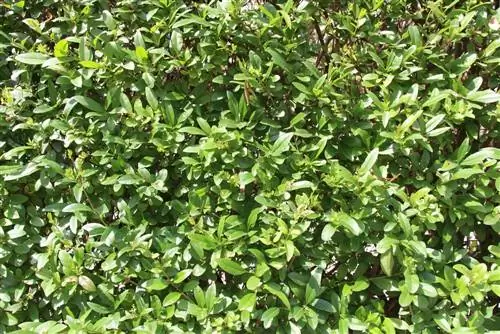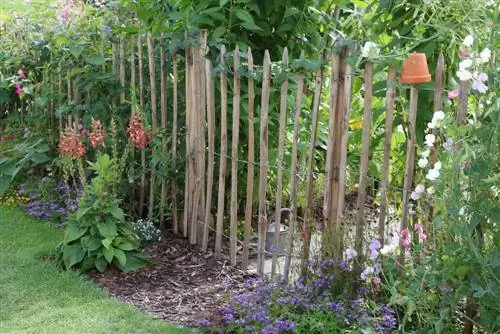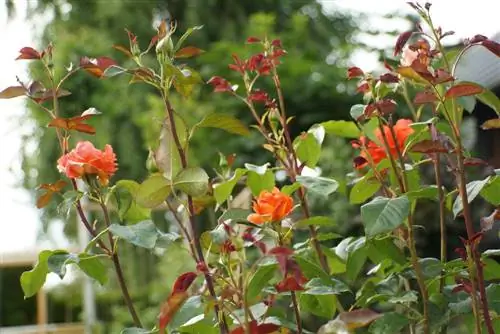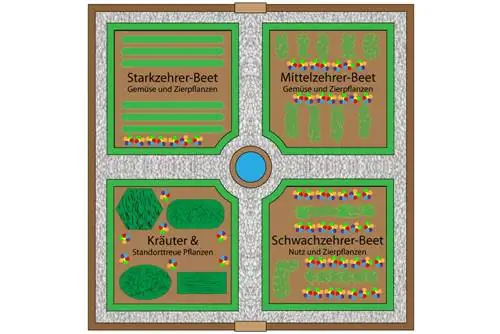- Author admin [email protected].
- Public 2023-12-17 03:39.
- Last modified 2025-01-24 12:45.
An old garden, possibly with mature trees, can be beautiful and even romantic. But an old garden in particular often needs renovation. Be it that the entire system does not suit your personal taste, be it that you would like to create new beds or install an additional stream.
There are many good reasons for redesigning an old garden, and your personal taste alone will determine what the garden will look like later. Before you get to work, however, you should plan well so that you don't get any unpleasant surprises later. We will explain in detail here what you should pay attention to and how best to approach the work.
Plan carefully
Draw a plan before doing anything else. If you want to keep existing paths, make sketches of where and how you want to design the beds, where you want to plant lawn, and whether you want to put a hedge or a fence. Collect ideas first before committing. If there is a pond or stream that needs to be removed, this is a task that you should do during the planning phase so that the soil in that area can dry out. Old hedges and bushes that you no longer want to use can also be removed. Then you should start to commit.
Do you want a purely ornamental garden, flower beds or even a kitchen garden? Do children play in the garden? Should a terrace be created? If you want to do the work yourself, a rough sketch is sufficient, but you should stick to it so as not to get bogged down. This also includes a planting plan so that you know where you have put what. Plan functional areas and ornamental gardens realistically. The best time to redesign a garden is spring. Although trees are generally not meant to be planted until fall and winter, container plants are now available that can be planted all year round. Also plan for electricity and water connections. This means you can avoid long journeys with the hose or watering can, and with sockets in different places you can not only connect the lawnmower, but also create good lighting.
Tip:
If there are old trees, you should make sure that the leaves do not fall onto the kitchen garden or that the shadows cast impair the growth of flowers and bushes.
Materials
When planning, calculate the required quantities as correctly as possible, this will also save you unnecessary costs. Different planting distances apply to hedge plants, so find out about the different varieties beforehand. If you want to raise the level of the soil, you should find out where you can get topsoil by the truckload. If you would like to remove soil, ask your local waste disposal company if you can deliver the soil there.
You will definitely need:
- Shovel
- Hoe
- Spade
- Wheelbarrow
- Sand and gravel or paving slabs
- Edges as borders
- Lawn seeds
- Hedge plants
- Perennials, flower bulbs, flower seeds as desired
- If necessary, you will need large stones for a herb spiral
Tip:
For larger ground movements, it is worth renting a small excavator. Many specialist stores also rent vibrating plates to level and compact the paths and subsoil for a terrace.
Work according to plan
You won't do everything in one day, so think about how you start, work your way up little by little. If you want or need to remove old lawns, start there. Then you should create the paths and install power cables and water points if necessary. Compact the subsoil before laying gravel or paving slabs. If you want to create a pond or stream, you can now work without considering existing plants. Make sure that power cables run underground to avoid damaging them when mowing the lawn or gardening.
When planting new plants, pay attention to the position of the sun in order to find the optimal locations for your planned new plantings. Many plants need sunny or partially shaded locations. A garden only develops over time. Don't plant the new plants too close together as they will start to interfere with each other after just two to three years. If you want to create a new lawn, the ground should be free of weeds and have settled somewhat. Lawn seeds must be sown evenly and should only be lightly covered with soil to avoid being picked off by birds. If you want to make it easy for yourself, lay turf, it can be accessed almost without waiting, but it's not cheap.
Tip:
Be patient. Set aside only as much as you can realistically accomplish each day.
Recommended plants
For the hedge:
- Boxwood, needs regular pruning
- Bamboo, fast growing, can be cut back if necessary
- Mock cypresses, dense and evergreen, easy to care for
- Cherry laurel, evergreen, but not a conifer
In general, conifers are suitable as hedge plants; they grow relatively quickly and are insensitive.

Recommended shrubs:
- Farmer jasmine, strongly scented, easy to care for
- Viburnum, large, bright white flowers
- Kolkwietzie (mother-of-pearl bush), also thrives in the shade, delicate pink-white flowers
- Hydrangea, a sea of flowers in spring
- Rhododendron, can also be used as a hedge
Tip:
Fruit bushes should not be missing even in a purely ornamental garden. Currants, gooseberries and the like offer fresh vitamins without making a lot of effort.
Recommended flowers
Personal taste is the only deciding factor here. When planting, keep in mind that bulbous plants need a certain amount of time to fully bloom. If you redesign your garden in the summer, you should already plan for the coming spring. Crocus, daffodil, hyacinth and tulip should be planned now. Note the location on your planting plan so they are not missed. Feel free to plant summer plants to fill gaps in the areas that you want to be filled with shrubs and perennials in a year or two. They bridge the empty spaces.
Conclusion
Redesigning an old garden requires good planning and a lot of work. If you don't take on too much at once, you'll feel like you've made a lot of progress every day. You will be rewarded for your effort in the first year after the redesign. Remember that plants develop slowly, so you will constantly discover something new in your new garden.
Tips for speed readers
- A rough classification of the different areas is usually very beneficial for rework and has so far been found to be very good by users. The terrain should be completely cleared by the owners and possibly even staked out. An exemplary division should take into account areas such as children's play areas, bed areas, rest areas, ponds, decorative beds, wood storage areas, purely usable areas for fruit trees and bushes.
- So it is very important, first and foremost, for small children to have their own area in which they can freely develop according to their hearts' desires. Utensils such as a sandpit, a frame with a slide and swing, and a mud area that can be used for special water activities are particularly popular with the little ones.
- Adults also need a place where they feel particularly comfortable and can retreat after a hard day at work. In addition to a spacious terrace, there should also be a place of peace inside the garden.
- A beautifully planted garden pond, which is put in a special light with stylish recessed lights, can be very cozy and idyllic for such purposes. However, with small children, care should be taken to ensure that this can be locked as necessary to protect the little ones. Metal or wooden fences have proven to be very effective as barriers and they also have the advantage that they can be easily and permanently removed later.






